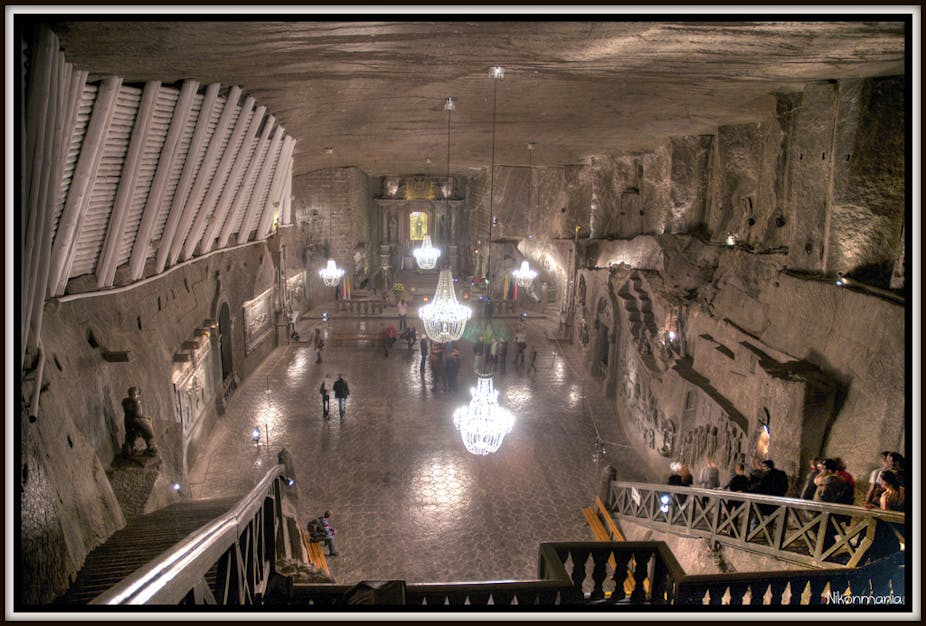Is it possible to have an ice-skating rink in an old mine? Or perhaps a wine and cheese cellar in a mine shaft? Or even a swimming pool in a processing plant?
It isn’t just possible – it can be environmentally, socially and economically friendly too.
Restoring the environment
In Australia, mining companies must rehabilitate the land they use once mining is finished. Rehabilitation usually focuses on restoring the pre-mine environment. This may be a natural environment, agriculture, forest or whatever was there before the mine.
In Western Australia, Alcoa focuses on recreating the surrounding Jarrah forest after completing their bauxite mine operations.
In the Hunter Region, Xstrata is working on ways of restoring agricultural land on old coal mines and processing plants.
Sometimes it isn’t possible to restore the pre-mine environment. Sometimes there has just been too much change to the landscape. Changes might include altered topography (holes and hills), the addition or removal of above- and below-ground water, and changes to environmental chemistry.
In these cases, we need to consider other options for mine rehabilitation.

Building new ecosystems when old ones are too far gone
Ecosystem engineering is all about designing ecosystems suitable to changed sites. These ecosystems should be stable, self-sustainable, and resilient to fire, flood and drought.
The AMD&ART project, conducted in Pennsylvania between 1994 and 2005, included designing a landscape that could cope with changes to environmental chemistry.
In Ontario, industry waste is used to grow corn and canola crops for biofuels production.
Getting creative with old mines
The Post Mining Alliance is a UK-based, not-for-profit group undertaking international research into creative uses for old mine sites.
Underground salt mines in Poland have been used as wedding and dining venues. Moldova is home to a wine cellar in an old limestone mine, and in Italy there is a cheese store in an old copper mine.

The Zollverein Colliery in Germany has both an ice-skating rink and swimming pool nestled in the old plant. Diving and indoor ski centres have been made in underground mines in both the UK and Germany.
Open cut mines can be rehabilitated to become amphitheatres, the vast open spaces providing amazing acoustics.
The Eden Project in the UK is an environmental education facility inside an old china clay mine. The project not only considers the environment, but also provides more jobs and income than the previous mine did. The project has also increased social inclusion through education and awareness campaigns.
The Post Mining Alliance has been able to demonstrate that many of these creative rehabilitation options consider environmental concerns, long-term community needs and engagement, and provide local and national income.
Creative options address more than the environment, but consider broader aspects of sustainability, community and economics.

The Australian approach
In Australia, we are also considering sustainable and creative options for mine rehabilitation.
Parts of the cult-film, Mad Max were filmed inside a converted mine.
Towns such as Kalgoorlie and Coober Pedy are famous for their mining history and have become popular on the tourist circuit.
The Woodlawn bioreactor at Tarago in New South Wales is situated in an old copper, zinc and lead mine. It provides alternative waste management, jobs and greener energy.
So, when recreating pre-mining environments is not possible, perhaps we should look to creative mine rehabilitation options.
If nothing else, there’s something pretty awesome about the idea of an underground hotel.
Creative uses of mines and other land restoration issues are being discussed at the ACT/NSW Land Restoration forum in Canberra today.

